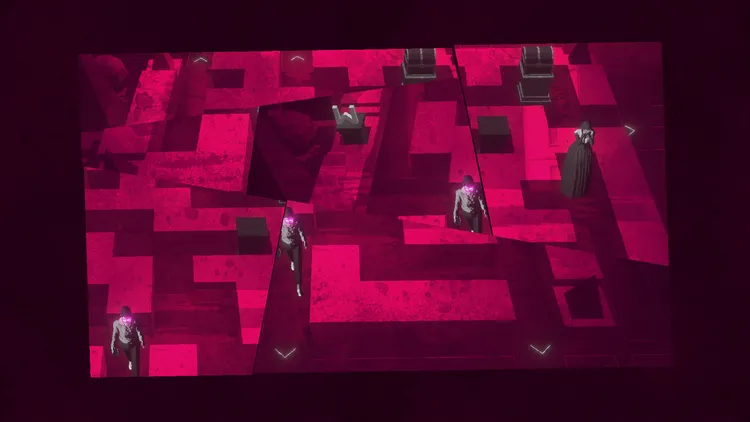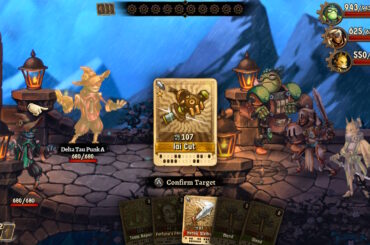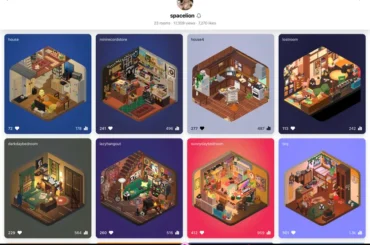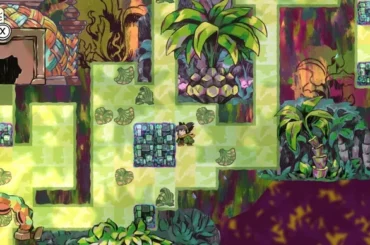I’ve probably spent more time jotting down notes and theories in Lorelei and the Laser Eyes than actually playing the game itself. The latest release from Simogo — the Swedish studio behind eclectic titles like Year Walk and Device 6 — is a puzzle-dense mystery game that can feel overwhelming at first. Almost everything in the game is locked behind some sort of door, and figuring out how to open them requires unraveling a flood of cryptic, strange, and often baffling clues. But once I surrendered to the game’s logic, it all started to make sense. Soon enough, it was all I could think about, and my notebook, filled with scribbled solutions, is evidence of that.
The game begins with minimal setup: you arrive at a seemingly abandoned hotel in the woods, led there by a mysterious letter from a cult film director. From that point on, you’re left to figure things out on your own. While there are a few clear objectives, like tracking down missing script pages for the director, most of the game revolves around solving puzzles that unlock more of this monochrome world, revealing the bizarre mysteries lurking beneath. The story and puzzles are deeply intertwined, with each solution unlocking another strange narrative layer. The deeper you go, the weirder things get, involving ghosts, murder, mazes, obscure films—and plenty of coffee. Think of it as a David Lynch-designed escape room.
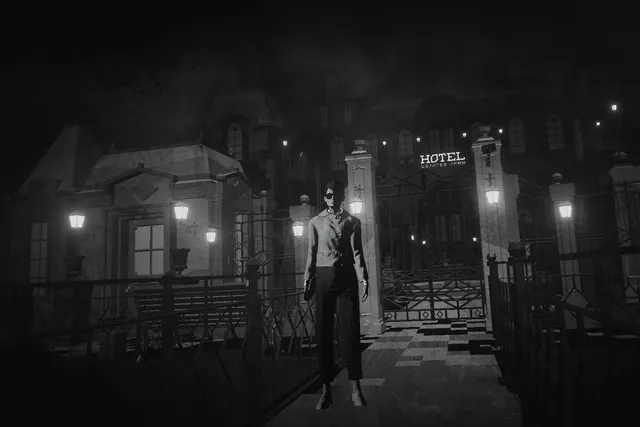
At first, Lorelei and the Laser Eyes feels daunting because everything is locked away. Even getting into the hotel grounds requires cracking the code on a padlock, and once inside, nearly every room or area is sealed off by puzzles that lead to more puzzles. The first time I unlocked a door, I was thrilled—only to find that the room contained nothing but a locked safe.
Many of the puzzles initially seem impossible. It took patience (and a leap of faith in the developers), but eventually, I started piecing together solutions, and each one brought a new discovery. Here’s a small taste of the things you’ll have to deal with: Roman numerals, the Greek alphabet, modern art, fictional Italian films, moon phases, PS1-era video games, and, unfortunately, basic math.
It might sound overwhelming, but the key to progress is realizing that every solution is hidden somewhere in the game itself. Once I grasped that everything is a clue, the puzzles began to click into place. While the challenges remained difficult, the sense that each puzzle was solvable pushed me forward. When I hit a roadblock, it was usually because I hadn’t found the necessary information yet. Thankfully, Lorelei and the Laser Eyes gives you plenty of tools to help. The protagonist has a photographic memory, so you can reference a running list of key documents, images, and memories. Even so, I’d recommend having a notebook on hand for working through the trickier puzzles.
One of the game’s most impressive feats is its cohesiveness. Every element connects in a natural way, and nothing feels random. Even the most obscure details eventually make sense. It’s hard to think of another game where every part fits together so seamlessly. The closest comparison might be The Witness, but Lorelei and the Laser Eyes weaves its story and gameplay together on a deeper level, all while oozing style and personality.
That’s to be expected from the creators of the ultra-slick Sayonara Wild Hearts. This new game has a noir vibe, blending visual influences from classic video games, Saul Bass, and Lynch. Despite its dark tone, it’s surprisingly playful. At one point, you can even mail-order playable cartridges for an in-universe Game Boy. It’s weird, unsettling, lovable, and visually stunning all at once.
Lorelei and the Laser Eyes is also part of a remarkable wave of recent indie games, alongside titles like Hades II, Manor Lords, Crow Country, and Animal Well. It’s a crowded field, but Lorelei and the Laser Eyes stands out with its seamless fusion of puzzles, atmosphere, and eerie worldbuilding. Just be sure to keep a notebook close by.
